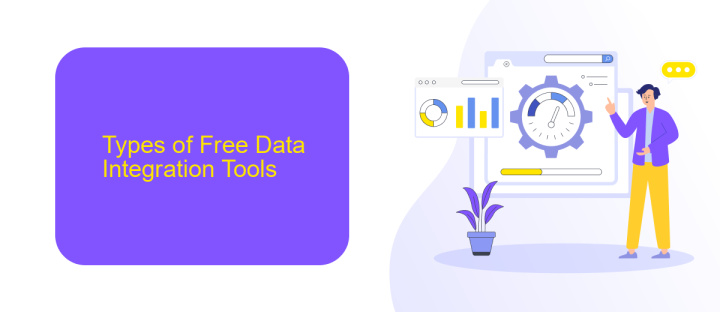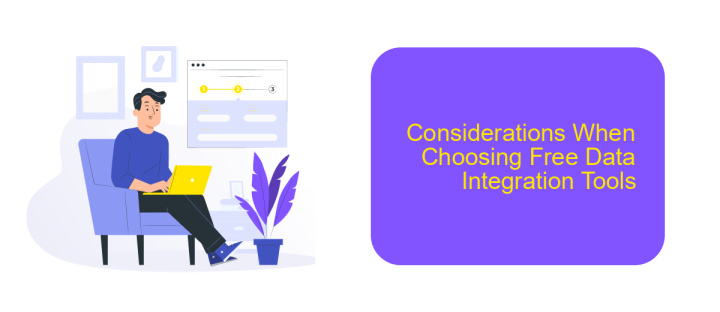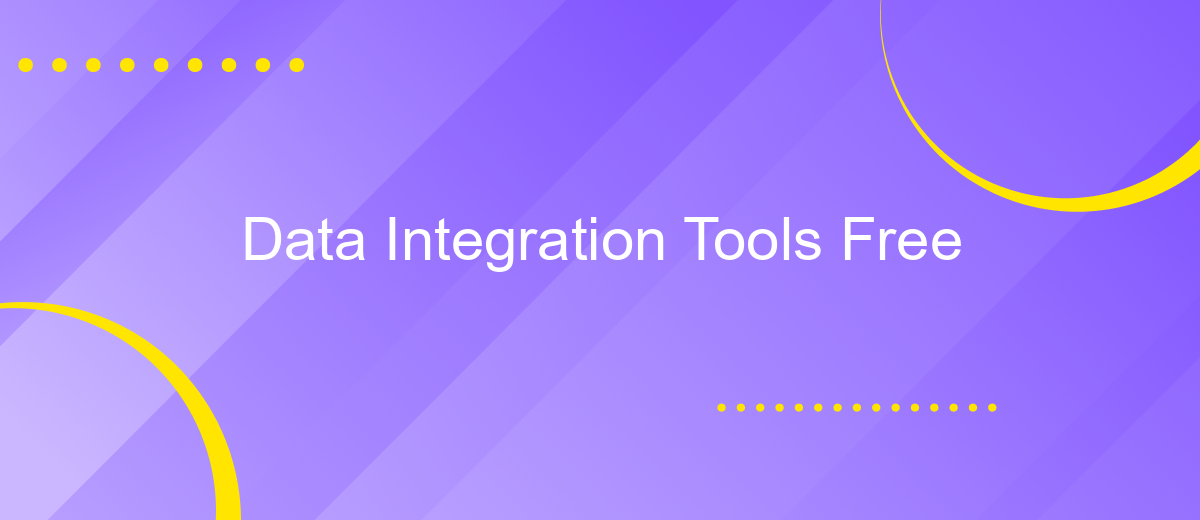Data Integration Tools Free
In today's data-driven world, efficient data integration is crucial for businesses of all sizes. Free data integration tools offer a cost-effective solution for seamlessly combining data from various sources, enabling better decision-making and streamlined operations. This article explores some of the best free data integration tools available, highlighting their key features and benefits to help you choose the right one for your needs.
Overview: Free Data Integration Tools
Free data integration tools are essential for businesses looking to streamline their processes without incurring high costs. These tools help in connecting various data sources, automating workflows, and ensuring data consistency across different platforms. They are particularly useful for small to medium-sized enterprises (SMEs) that require efficient data management solutions but have limited budgets.
- Talend Open Studio: A versatile open-source tool for data integration, data quality, and data management.
- Apache Nifi: An easy-to-use, powerful, and reliable system to process and distribute data.
- ApiX-Drive: A user-friendly service that facilitates the integration of various applications and automates data workflows.
- Pentaho Data Integration: Provides ETL capabilities to extract, transform, and load data from various sources.
- Fivetran: Offers automated data integration with a focus on simplicity and reliability.
These free tools provide robust solutions for data integration needs, allowing businesses to optimize their operations without financial strain. ApiX-Drive, for instance, stands out for its ease of use and ability to connect numerous applications, making it an excellent choice for automating data workflows. By leveraging these tools, companies can ensure seamless data integration and enhance their overall efficiency.
Types of Free Data Integration Tools

Free data integration tools come in various types to cater to different needs and technical expertise. Some tools are designed for simple, no-code integrations, making them accessible to non-technical users. These tools often feature drag-and-drop interfaces and pre-built connectors to popular applications. For example, ApiX-Drive offers a user-friendly platform that allows users to automate data transfer between different services without writing a single line of code. This makes it ideal for small businesses or teams who need to streamline their workflows quickly and efficiently.
On the other hand, there are free data integration tools that require more technical knowledge but offer greater flexibility and customization. These tools often support complex data transformations and integrations with a wide variety of data sources. Open-source platforms like Talend Open Studio and Apache Nifi fall into this category, providing robust solutions for developers and IT professionals. These tools are perfect for organizations with specific integration needs or those looking to build highly customized data workflows. Whether you need a simple solution or a more advanced one, there's a free data integration tool to meet your requirements.
Benefits of Using Free Data Integration Tools

Using free data integration tools can offer significant advantages for both small businesses and large enterprises. These tools streamline the process of combining data from different sources, which can lead to more efficient operations and better decision-making.
- Cost Savings: Free tools eliminate the need for expensive software licenses, making them ideal for startups and small businesses with limited budgets.
- Ease of Use: Many free data integration tools, such as ApiX-Drive, offer user-friendly interfaces that require minimal technical expertise, allowing even non-technical staff to set up and manage data integrations.
- Flexibility: These tools often support a wide range of data sources and formats, providing the flexibility needed to adapt to various business requirements.
- Scalability: Free tools can often be scaled up as your business grows, ensuring that your data integration needs are met without additional costs.
- Community Support: Free tools usually have active user communities and forums where you can find solutions to common issues and share best practices.
Overall, free data integration tools like ApiX-Drive offer a cost-effective and efficient solution for managing your data. They allow businesses to focus on growth and innovation without the burden of hefty software expenses.
Considerations When Choosing Free Data Integration Tools

When selecting free data integration tools, it's essential to consider several factors to ensure that the tool will meet your needs effectively. The right tool should not only be cost-effective but also offer robust features and ease of use.
First, evaluate the compatibility of the tool with your existing systems. Ensure that it supports the data formats and platforms you are currently using. Additionally, consider the scalability of the tool to handle growing data volumes and complexity over time.
- Ease of Use: The tool should have an intuitive interface and straightforward setup process.
- Support and Community: Look for tools with active user communities or customer support options.
- Data Security: Ensure the tool has robust security measures to protect your data.
- Customization Options: The ability to tailor the tool to your specific needs is crucial.
Services like ApiX-Drive can be particularly useful, offering seamless integration capabilities with a variety of platforms. They provide user-friendly interfaces and extensive support, making the integration process smoother and more efficient. By considering these factors, you can choose a data integration tool that will serve your organization well.


Examples of Popular Free Data Integration Tools
One of the most popular free data integration tools is Talend Open Studio. This open-source software provides a comprehensive suite of tools for data integration, data quality, and data preparation. It supports a wide range of data sources, including databases, cloud applications, and flat files, making it a versatile choice for businesses of all sizes. With its user-friendly interface and powerful ETL capabilities, Talend Open Studio enables users to efficiently manage and integrate their data without incurring additional costs.
Another noteworthy free data integration tool is ApiX-Drive. This cloud-based service simplifies the process of setting up integrations between various applications and services. ApiX-Drive offers a wide range of pre-built connectors, allowing users to automate data transfers without any coding knowledge. It supports popular platforms such as Google Sheets, CRM systems, and email marketing tools, making it an excellent option for businesses looking to streamline their workflows. By leveraging ApiX-Drive, organizations can save time and resources while ensuring seamless data integration across their systems.
FAQ
What is a data integration tool?
Are there any free data integration tools available?
What are the key features to look for in a data integration tool?
How can I automate data integration processes?
What are the benefits of using a data integration tool?
Apix-Drive will help optimize business processes, save you from a lot of routine tasks and unnecessary costs for automation, attracting additional specialists. Try setting up a free test connection with ApiX-Drive and see for yourself. Now you have to think about where to invest the freed time and money!

